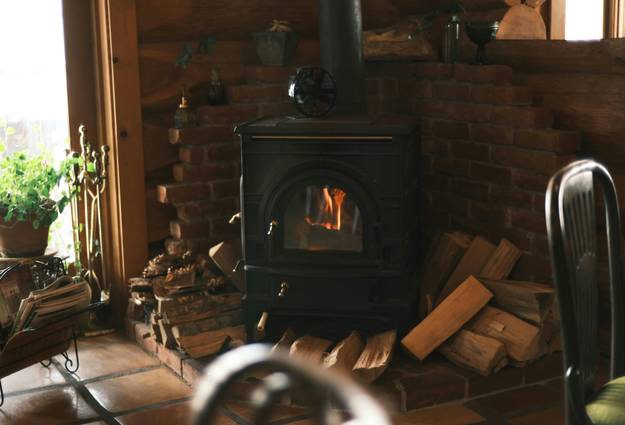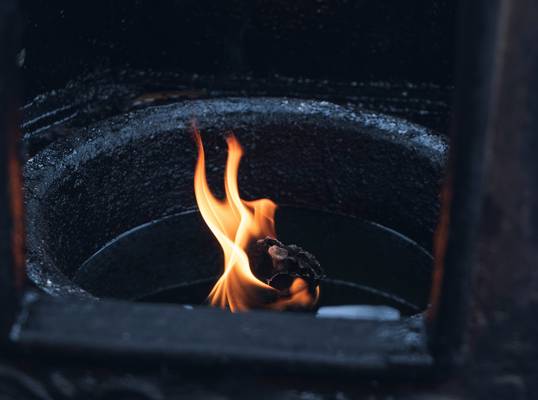
What Is a Wood Stove?
A wood stove is a freestanding heating appliance that burns firewood to produce radiant and convective heat. Unlike open fireplaces, wood stoves are enclosed, allowing for efficient fuel combustion and controlled heat output. Modern models are engineered for high efficiency and low emissions, making them a popular choice for supplemental and even primary heating.
- Fuel: Seasoned firewood (split logs, hardwood preferred)
- Efficiency: 60–80% (EPA-certified models)
- Installation: Requires chimney or stovepipe for venting
- Ideal For: Rural/off-grid homes, cabins, backup heat, ambiance
Main Types of Wood Stoves
1. Catalytic Wood Stoves
Catalytic wood stoves use a ceramic honeycomb combustor to burn smoke and gases at lower temperatures, resulting in higher efficiency and longer, steadier heat output. The catalyst needs periodic cleaning or replacement.
- Longer burn times (good for overnight heating)
- Lower emissions than non-catalytic stoves
- Requires more maintenance
2. Non-Catalytic Wood Stoves
Non-catalytic wood stoves burn smoke and gases through a secondary combustion process, using baffles and increased air flow. These are easier to operate and maintain, though slightly less efficient than catalytic models.
- Simple operation (less to maintain)
- Fast startup and responsive heat
- May require more frequent reloading for long burns
Both types are available in a variety of sizes, materials (cast iron, steel, soapstone), and designs to fit your heating needs and decor.
How Wood Stoves Work
Wood stoves burn firewood in a firebox, drawing in air to support combustion. The stove radiates heat directly and also warms air that circulates around the stove and through vents or fans. A stovepipe or chimney vents smoke and gases safely outside. Modern EPA-certified stoves use secondary combustion or catalytic converters to burn off more smoke and gases, increasing heat output and reducing emissions.
- Primary Air: Feeds the fire, adjustable for heat control
- Secondary Air: Aids complete combustion, reduces smoke
- Chimney: Essential for safe venting and proper draft
Benefits of Wood Stoves
- Renewable Fuel: Burn locally sourced firewood for lower carbon footprint
- Off-Grid Capable: No electricity required for basic operation
- Cost-Effective: Potential for major fuel savings (especially if you harvest your own wood)
- Reliable Backup: Provides heat during power outages
- Ambiance: Creates a cozy, inviting atmosphere
- High Heat Output: Heats large rooms or small homes efficiently
- Modern Efficiency: EPA-certified stoves produce minimal smoke
- Long Lifespan: Durable cast iron or steel construction
Choosing a Wood Stove: Key Factors
- Size & Heat Output: Match stove BTU rating to your room or house size. Oversized stoves waste fuel and increase creosote risk.
- EPA Certification: Look for EPA-certified models for clean burning and regulatory compliance.
- Catalytic vs. Non-Catalytic: Consider your preference for maintenance, burn time, and operation.
- Material: Cast iron (holds heat longer), steel (faster heat), soapstone (steady, gentle warmth).
- Style: Modern, classic, or rustic to match your decor.
- Clearances & Venting: Ensure proper space from combustibles and a safe chimney setup.
Wood Stove Installation & Safety

- Install on a non-combustible hearth or approved floor pad
- Maintain required clearances from walls and furniture
- Use an approved chimney or stovepipe system
- Install a carbon monoxide/smoke alarm nearby
- Have your setup inspected by a certified professional
- Check local codes and insurance requirements
Wood Stove Maintenance & Cleaning
- Empty ashes regularly (only when fully cooled)
- Inspect and clean chimney annually to prevent creosote buildup
- Check gaskets, door seals, and firebricks for wear
- Burn only dry, seasoned wood to minimize smoke and soot
- Follow manufacturer’s instructions for catalytic combustor care (if applicable)
Common Wood Stove Issues & Troubleshooting
1. Poor Draft or Smoky Fires
- Check chimney for blockages or creosote buildup
- Ensure damper and air controls are open during startup
- Burn only dry, seasoned wood
2. Low Heat Output
- Stove may be undersized for the space
- Use hardwoods for longer, hotter burns
- Inspect seals and gaskets for leaks
Wood Stove FAQs
Related Guides
Types of Heating Stoves
Compare wood stoves with pellet, gas, electric, and coal to find the right fit for your needs.
Compare TypesStove Fuel Types
See how firewood stacks up against pellets, gas, and electric for cost, storage, and efficiency.
Fuel ComparisonEco-Friendly Stove Options
Explore the greenest choices in home heating, including the latest clean-burning wood stoves.
Eco-Friendly Heating